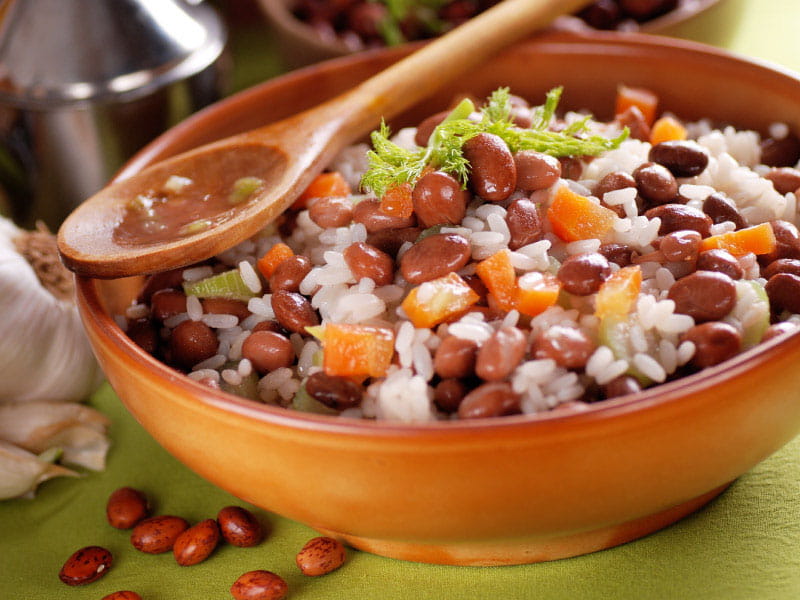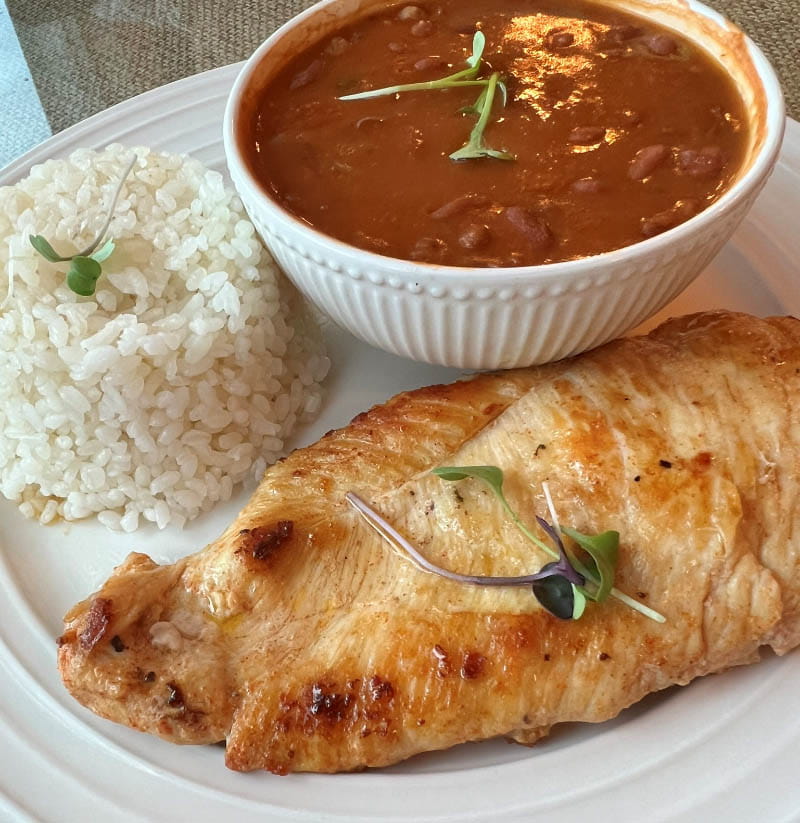Latin America's rice and beans dishes provide more than deliciousness
By Michael Merschel, American Heart Association News

"Rice and beans" sounds like the very definition of simplicity. But take a look across Latin America and the Caribbean, and you'll find it's a dish – or rather, dishes – as diverse as the region itself.
In Puerto Rico, you'll find arroz con gandules – rice with pigeon peas and flavored with peppery achiote oil. In Jamaica, "rice and peas" describes a dish often made with peppers and red kidney beans.
"It's more about the black beans with the rice in Cuba," said Dr. Sylvia Klinger, a registered dietitian nutritionist in Chicago. Cubans eat "moros y cristianos," or "Moors and Christians," a reference to battles from Medieval Spanish history. In Costa Rica, black beans are the basis for gallo pinto – what Klinger describes as "a very colorful" dish full of vegetables. The name, "spotted rooster," refers to the look of the mixed ingredients.
Many variations are referred to as the national dish of their home country. In the Dominican Republic, red beans, rice and meat are even called "La Bandera" – the flag.
"It's really fascinating" to see how it varies from country to country, Klinger said. She understands better than most: In addition to her academic credentials, she's a native of Puerto Rico who moved to Mexico as a girl with missionary parents who took the family across Central America, South America and the Caribbean.
The blending of ingredients reflects the blending of cultures. Beans have been cultivated in what is now Mexico and western South America for thousands of years. Annatto, the spice used to make achiote oil, comes from the Amazon. Depending on whom you ask, rice arrived with the Spanish and Portuguese, either from Asia, via the Spanish-controlled Philippines, or with enslaved people from western Africa.
Beyond the history lessons, rice and beans can be a healthy food, Klinger said.
To start with, "beans are an excellent source of protein, copper, magnesium and fiber," she said. The amounts vary by variety. A comparison published in the journal Nutrients in 2021 showed that cooked black beans have more magnesium than other varieties (70 milligrams per 100 grams, or 3.5 ounces), while cooked red beans excel at iron (144 mg per 100 grams). Cooked pinto beans have 9 grams of fiber per 100 grams.
"Every country has the beans that they favor, but in the long run, they all 100% provide great nutrition, no matter what," Klinger said.
The federal Dietary Guidelines for Americans suggest that women need 5 to 6.5 ounces of protein a day, and men need slightly more. The guidelines consider a quarter-cup serving of cooked beans as equal to an ounce of cooked meat for protein purposes. The American Heart Association's dietary guidance recommends consuming healthy sources of protein, mostly from plants, including beans.
Many recipes for traditional refried beans call for unhealthy lard, which experts say should be avoided in favor of healthier vegetable-based oils such as canola, corn or olive oil. And canned beans can have sodium, but Klinger said rinsing the beans and draining the water could eliminate more than 40% of it.
Paired with rice, Klinger said, beans provide all the amino acids a body needs. That's referred to as a complete protein. "It's a great thing to have both of them combined," she said.
White rice is the most popular in Latin America, and some see that as problematic. Brown rice is higher in some nutrients, including fiber, than white rice. Klinger noted that although most white rice in the U.S. is fortified with vitamins, brown rice is also a whole grain, unlike white rice. Federal dietary guidelines say that half of the grains we eat should be whole grains.
A study of Costa Rican adults, published in 2011 in the American Journal of Clinical Nutrition, suggested that increasing the ratio of beans to white rice in the overall diet could lower the risk of Type 2 diabetes.
Klinger is pragmatic. People are particular about the rice they prefer, she said. For example, when making arroz con gandules, she uses only short-grain rice that she orders from Puerto Rico.
For many people, she said, switching to a "healthier" but different-tasting rice in a traditional Latin American dish would be like changing the bread in a hot dog or hamburger bun in the United States: It may be a healthy idea, but some people just won't consider it.
So those who can't bear the thought of switching need to make sure they get whole grains elsewhere in their day, Klinger said, perhaps by eating a whole-grain cereal at breakfast. And to boost fiber, she recommends adding extra vegetables to their rice and beans. "Mexicans like to make it with tomatoes," for example, she said. "So, double up on the tomatoes," and add other favorite vegetables such as carrots, peas or corn.
Traditional rice and bean recipes often go overboard on oil and salt, she said. "I remember my grandma used to start her rice and beans with a big can of oil and a big spoonful of salt," Klinger said. "We've come a long way from there."
She recommends using oil sparingly and selecting those healthier, plant-based options. (She's a fan of vegetable avocado oil.)
Klinger also goes easy on salt in her recipes, but that doesn't mean she's giving up flavor. "Add more seasonings – such as cilantro, onions or garlic," all of which provide nutrition without adding sodium or saturated fat, which can be damaging to heart health. Be aware that some premade seasoning mixes, or ingredients such as bouillon, can add extra sodium.
Adaptations can be both tasty and traditional, she said. Some Mexican dishes, for example, tend to be spicy – or at least hotter than what her Puerto Rican family was used to. So if you're cooking with chile peppers, she said, "you don't even need salt."

Klinger's own favorite rice and beans dish is probably arroz con gandules. Her version starts with homemade sofrito sauce, which can be part of a heart-healthy Mediterranean-style diet.
Her version of arroz con gandules leaves out the ham that some people add. The rest of the ingredients – sofrito, tomato paste and the Puerto Rican spice blend called sazón – "provide a robust, great flavor without the meat."
For Klinger, rice and beans are a foundation of a Latin-style diet that provides an abundance of nutrients. So, when it comes to the beloved staple, her advice is clear: "Definitely eat them."
Eat It or Leave It? is an American Heart Association News series that takes a closer look at the health benefits and drawbacks of specific foods and drinks.





